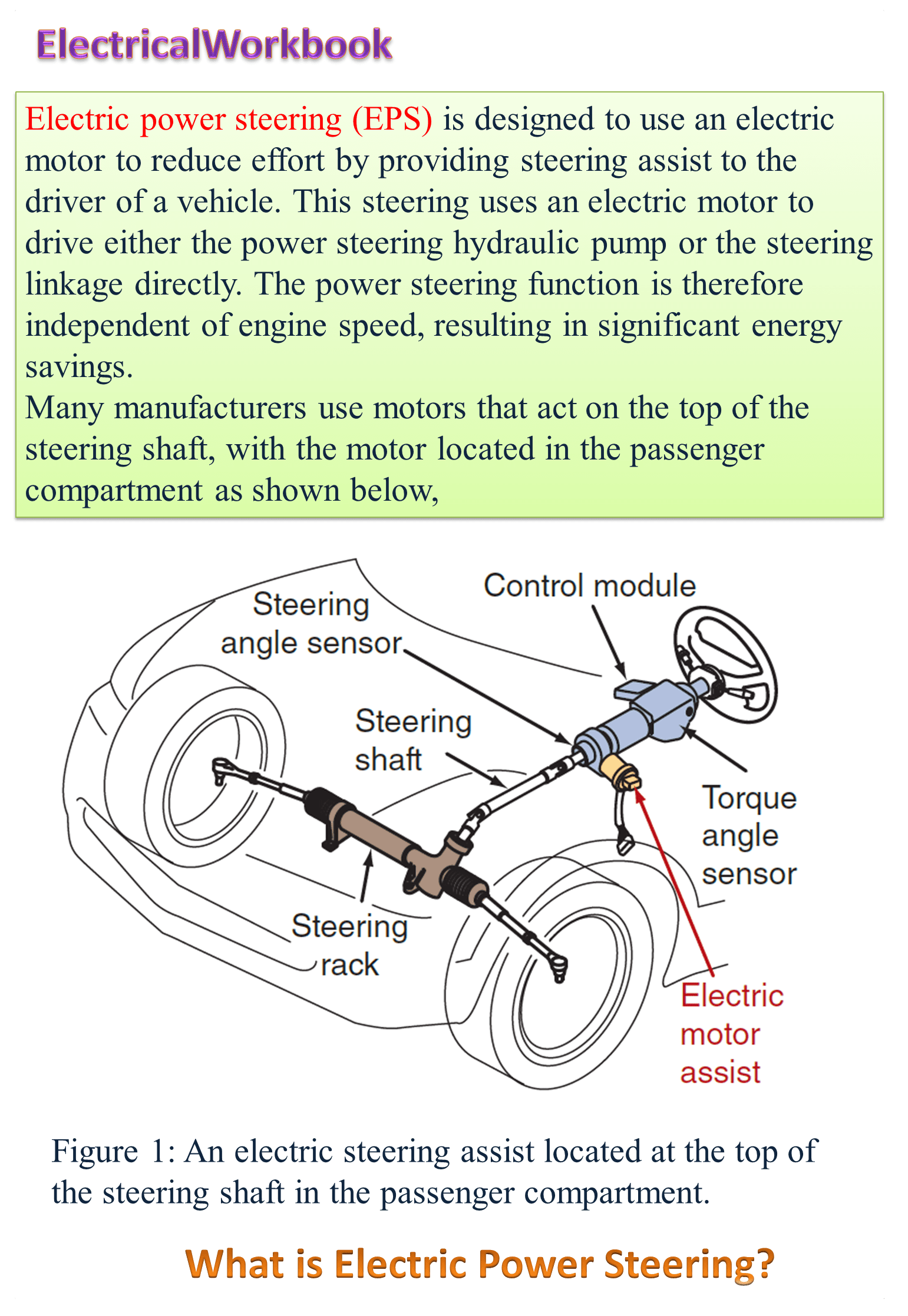
Parts of Electric Power Steering System
Figure 2: Electric Power Steering.
The main components of the electric power steering system (see Figure 2) are as follows,
- Motor
- Electronic Control Unit (ECU)
- Torque sensor
- Rotating (or) Steering angle sensor
- Reduction gear box.
Motor
The motor employed for Electric Power Steering (EPS) system gear assembly is a permanent magnetic field DC motor. This motor generates steering assisting force required to turn the wheels. The motor should be able to produce torque without turning and also, to reverse the rotation rapidly.
Electronic Control Unit (ECU)
ECU is an important device of EPS system. The ECU controls the input and output signals of steering sensor and vehicle speed sensor. In EPS system, ECU has three primary roles or functions. They are,
- To control the motor current and steering functions.
- For self-diagnosis and fail-safe functions i.e., for monitoring the controls of EPS system and its components.
- To communicate between the ECU and EPS system i.e., the data stored in ECU can be read by EPS.
Torque Sensor
A torque sensor in EPS system is used to convert the input torque of steering and its direction into signals of voltage. Torque sensor consists of input and output shaft, which are connected by a torsion bar. The input shaft has splines and output shaft has slots. The displacement of input and output shaft produces the torque in the torsion bar, which is magnetized and changes into the signals of voltage.
Rotating or Steering Angle Sensor
It is located in the steering box and is employed to convert the rotational speed and its direction into signals of voltage.
Working of Electric Power Steering System
During steering operation, the inputs from the vehicle speed sensor and steering sensor are sent to ECU. The ECU will compare the input signals with the assisting force of steering, which is pre-programmed and sends the appropriate signals to the current controller. The controller supplies a sufficient amount of current to the electric motor. Therefore, the supply of current causes the motion of rack towards the left or right, depending upon the direction of the current. The motor can be protected from being overloaded and surges of voltage, due to faulty alternator or charging problem by an Electronic Steering Control unit (ESC). The ESC unit is a self-diagnosing device, which is capable to monitor the input and output of the system and supply of driving current to the driving motor. If a problem exists in the system, then by actuating a fail-safe relay in power unit, the entire system is turned off through the ESC unit. Thus, the steering system reverts back to the manual steering system and a red light is indicated on dash board as an indication to the driver